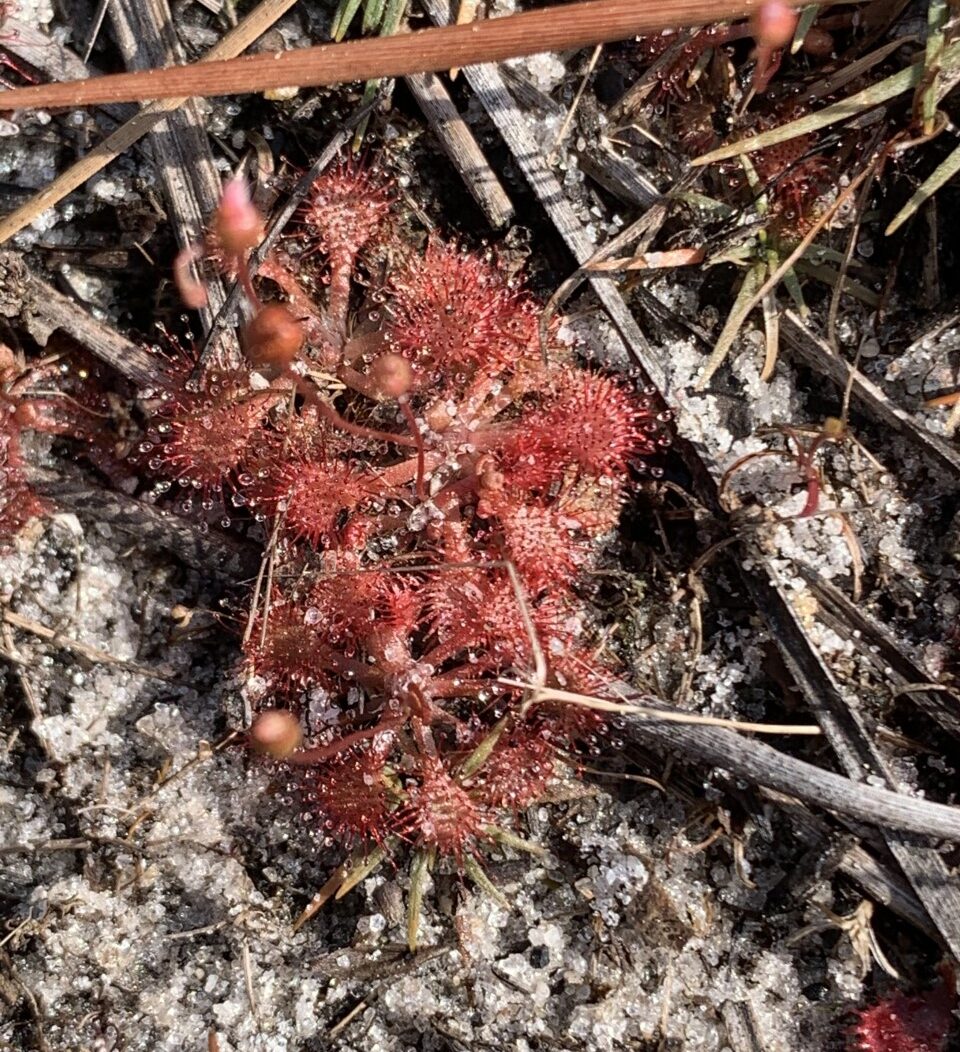
It takes a sharp eye, but if you look carefully in areas such as wet pine flatwoods and bogs, you may be richly rewarded with a view of a tiny ephemeral plant, commonly called the sundew. Sundews develop green leaves with fine red hairs. They may be found growing close together in groups, and if you catch them at the right time, they may be sparkling with the dew that glistens on the tiny, hair-like structures of their leaves. Sounds innocuous, doesn’t it?
But the little sundew carries a big bite! It is a carnivorous plant that likes to munch on unsuspecting insects. Sundews generally grow in moist depressions of acidic, nutrient-deficient, sandy and sometimes disturbed soils. These predatory plants supplement their lack of nutrients by luring, trapping, and digesting animal organisms with sticky enzyme-packed mucus found on their leaves. The more well-fed the sundew, the more flowers and seeds are produced. There are five species of sundew in Florida and over 130 species scattered across the world.
Naples Botanical Garden is home to pink sundew (Drosera capillaris), which produce purplish-pinkish flowers supported by a circular leaf base, about the size of a dime to a nickel.

Thanks to the Conservation team for this post.


